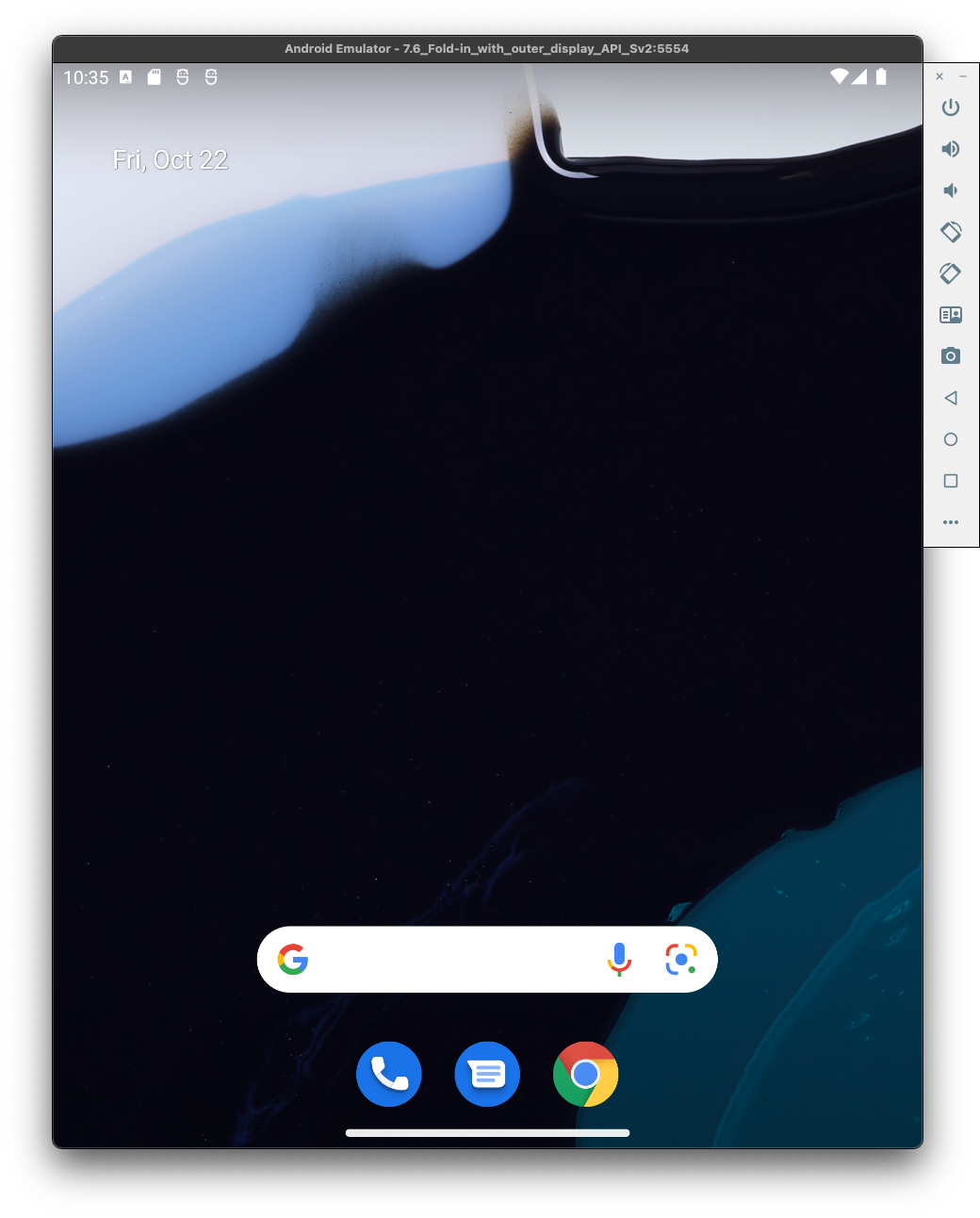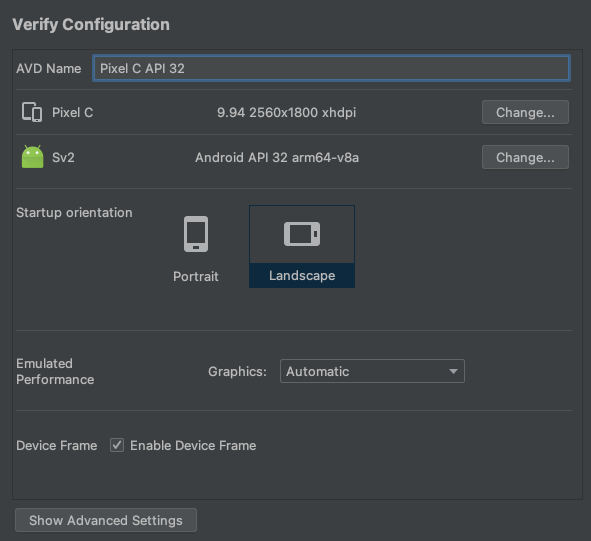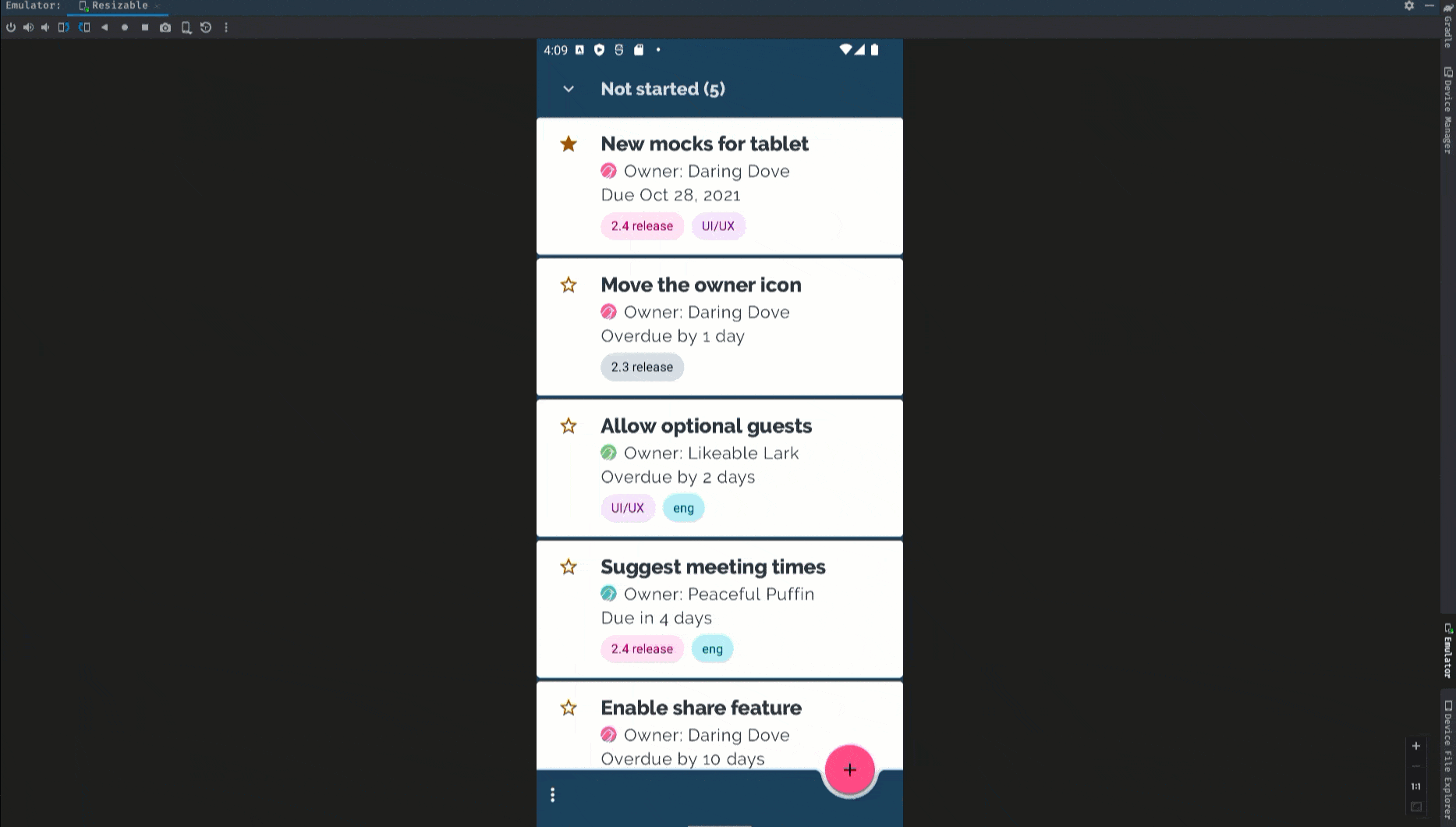
You can get the 12L feature drop in any of the following ways:
- Download the 12L emulator image through Android Studio
- Get 12L on a partner device
- Get 12L on a Google Pixel device
- Get a generic system image (GSI)
Complete instructions are below. Setup is fast and you can try your apps on a variety of screen sizes.
For ideas on what to test, see Get your apps ready.
Set up a 12L virtual device
To set up a 12L virtual device, follow these steps:
In Android Studio, click Tools > SDK Manager.
In the SDK Tools tab, select the latest version of Android Emulator, and click OK. This action installs the latest version if it isn't already installed.
In Android Studio, click Tools > Device Manager, then click Create device in the Device Manager panel.

Select a device definition with a large screen, such as the Pixel C in the Tablet category or the 7.6" Fold-in with outer display in the Phone category, then click Next.
Find the 12L system image, called Android API 32, and click Download to get it. After the download completes, select this system image and click Next.

Finalize other settings for your virtual device, then click Finish.

After returning to the list of virtual devices in the Device Manager, find your 12L virtual device and click Launch
 to
start it.
to
start it.
Repeat these steps to create a variety of large screen device definitions that you can use to test your app in a variety of large screen scenarios.
Resizable emulator
In addition to large screen virtual devices that you can configure for 12L, you can try the resizable device configuration that's included in Android Studio Chipmunk | 2021.2.1 or higher. When you're using a resizable device definition with a 12L system image, the Android Emulator lets you quickly toggle between the four reference devices: phone, foldable, tablet, and desktop. When using the foldable reference device, you can also toggle between folded and unfolded states.
This flexibility makes it easier to both validate your layout at design time and test the behavior at runtime, using the same reference devices. To create a new resizable emulator, use the Device Manager in Android Studio to create a new virtual device and select the Resizable device definition.

Get 12L on a partner device
We've partnered with Lenovo to make 12L available for you to try on the Lenovo P12 Pro.
You can learn how to install 12L on the Lenovo P12 Pro by visiting Lenovo's 12L preview site.
Lenovo provides 12L updates on its own timeline and provides its own channel for reporting issues found on their devices. We highly recommend using Lenovo's feedback channels to report bugs and feedback that are specific to their devices.
Get 12L on a Google Pixel device
If you have a supported Google Pixel device, you can check and update your Android version to receive 12L over the air.
In most cases, you don't need to do a full reset of your data to move to 12L, but it's recommended that you back up data before installing 12L on your device.
12L OTAs and downloads are available for the following Google Pixel devices:
- Pixel 3a and 3a XL
- Pixel 4 and 4 XL
- Pixel 4a and 4a (5G)
- Pixel 5 and Pixel 5a
- Pixel 6 and 6 Pro
Flash or manually install a system image
Alternatively, if you'd rather flash your device, we recommend using the Android Flash Tool.
Flash 12L to a supported device
If you need to flash your device manually for some other reason, you can get the 12L system image for your device on the Pixel downloads page. Read the general instructions for how to flash a system image to your device. This approach can be useful when you need more control over testing, such as for automated testing or regression testing.
Get a generic system image (GSI)
Android Generic System Image (GSI) binaries are available to developers for app testing and validation purposes on supported Treble-compliant devices. You can use these images to address any compatibility issues with 12L as well as discover and report OS and framework issues before 12L is officially released.
See the GSI documentation for device requirements, flashing instructions, and information on choosing the right image type for your device. Once you're ready to download a GSI binary, see the Android 12 GSI section on the GSI releases page.
Next steps
After you have a device configured for 12L, here are some things to do next:
- Learn more about what's in 12L
- Learn what to look for and test in your app
- Optimize your app for large screens
- Set up the 12L SDK
